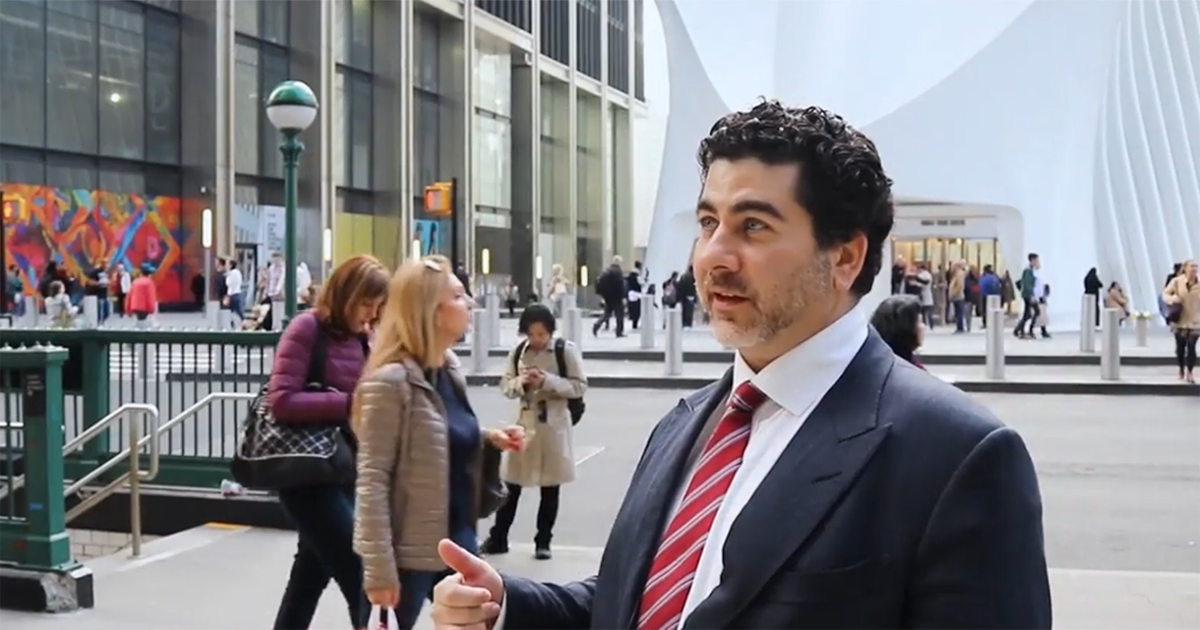Keeping the Construction of the 9/11 Memorial on Schedule
Nure Aiza (MPM '98) used lessons learned in Northwestern Engineering's Master of Science in Project Management (MPM) — and creative thinking — to ensure the memorial got done on time.

It's been more than a decade since Nure Aiza (MPM '98) faced one of the most daunting tasks of his professional career, yet the memory remains fresh.
Aiza, president of New York City-based Toll International LLC since 2005, consulted as a senior scheduler for the Port Authority of New York and New Jersey, who hired him to oversee scheduling for the National September 11 Memorial & Museum in New York. The project was challenging for a number of reasons, but from Aiza’s perspective, the primary obstacle was there was no wiggle room on the completion date. An unveiling event was scheduled on the tragedy’s 10-year anniversary, and it was Aiza’s job to map out a plan that ensured the memorial would be completed by Sept. 11, 2011.
“The families of the victims were promised by (New York) Governor David Paterson that the memorial was going to be done by the 10th anniversary," Aiza said. "Of course he’s not a scheduler, but he was a very good governor, and he gave us the mandate.”
At one point, it looked as though the memorial would not be ready. The project’s developer agreed to have the building’s steel components fabricated in Belgium, where the material was high quality and the cost was cheaper. Aiza realized that completion of the memorial required additional steel members, but with the strict deadline approaching, he knew waiting for them to be fabricated overseas and delivered to New York would very likely delay the completion.
Aiza would have to get creative.
“I’m one of those people who think outside the box,” he said.
Aiza knew that Silverstein Properties, the real estate developer that had the lease for the original World Trade Center towers and was overseeing the rebuild, had secured the needed steel for the new One World Trade Center. He also knew that project did not have the same time sensitivity as the memorial.
“The developers of One World Trade Center needed to complete the foundation first, because you cannot erect the steel frame until the foundation is finished,” Aiza said. “I proposed that we borrow the steel from that project and replace it with the Belgian steel. So we did a swap. They had the tonnage and it was in the area, so why wait for the Belgian steel? We used what was needed for the memorial and the rest went into the One World Trade Center with the Belgian replacement steel.”
Aiza said the swap resulted in some intense conversations between the involved parties who were skeptical of this bold plan. But in the end, everyone was happy. Santiago Calatrava, architect for the neighboring World Trade Center Transportation Hub, later told Aiza that the steel exchange was a brilliant idea.
The steel shortage was not the only challenge Aiza faced, but he worked closely with his construction team, materials suppliers, and engineers to ensure everything went according to plan.
Aiza’s schedule got the memorial done just in time. The work on the project was completed Saturday, Sept. 10, 2011, one day before the big unveiling. The museum part of the project faced a series of delays and ultimately opened in 2014.
The memorial was a major accomplishment for Aiza's company, which partners with clients to handle scheduling, project controls, management systems, cost estimating, management consulting, and risk management. Aiza said his background in project management and knowledge gained from the MPM program made it possible to succeed through the various assignments he’s faced in his career.
“Technology and engineering are not the challenge,” Aiza said. “It’s the politics and the presentation of ideas. You have to present the ideas in a way that everyone understands. Everybody gets stressed out because these projects are a lot of money and involve a lot of risk. Leadership and politics are very important. We have to overcome the politics so we can agree on what’s best for the project and not what’s best for each stakeholder.”

